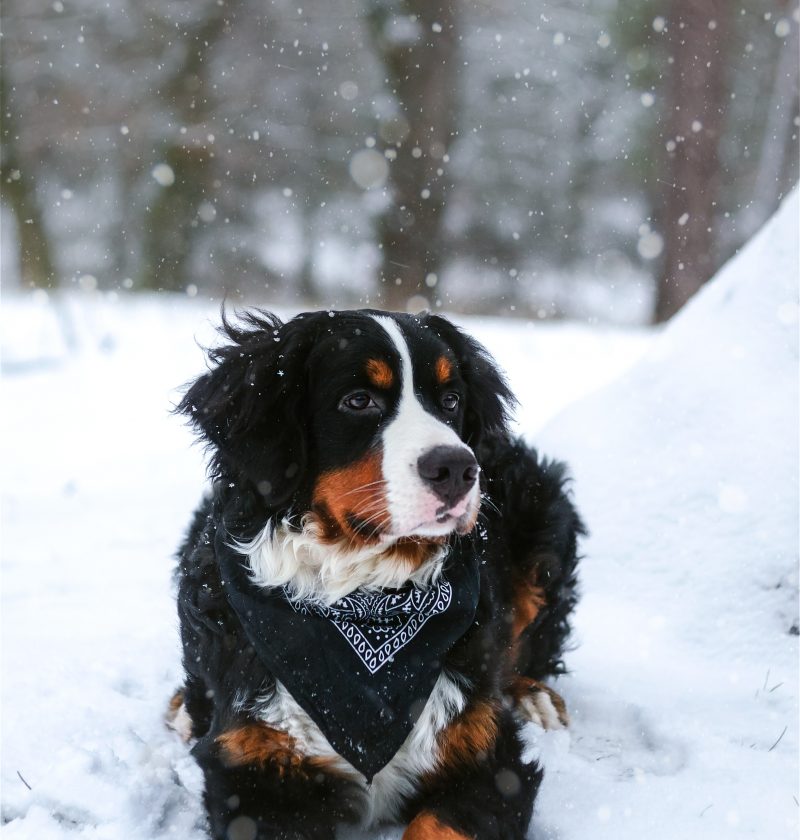As winter draws nearer, many of us pet parents are already considering the changes we’ll be making to our daily routines, including how we walk our dogs.
After all, with the darker nights, colder weather that often leads to freezing temperatures and the likelihood of snow and ice, it’s important to consider how we walk our dogs in winter and the changes we may need to make.
So, we’ve collected our top tips for walking your dog in winter to make sure that you and your pup are all prepared for wintertime.
Top Tips for Walking Your Dog In Winter
Plan Ahead of Time.
One of our top tips for walking your dog in winter is planning ahead of time. The weather can be unpredictable, so your regular walk may not always be possible if a snowstorm occurs or if the temperature drops below freezing.
Consider planning some alternative routes, ones that you can walk safely with your dog in the dark, shorter walks for bad weather occasions or even activities you can do at home to keep your dog active if a walk isn’t possible. For example, why not consider trying some DIY Happiness Games or scent training that will keep your dog active and stimulated when walks aren’t possible.
Remember the Winter Coat.
During the winter months, you may feel that your dog needs a coat to help keep them warm while on colder walks. After all, you may be wrapping up warm too, so why not wrap your dog up too?
As Pet Parents, it’s our job to cater to our dog’s needs, and making sure their warm while on their winter walks is one of those needs. You may feel your dog needs a winter coat while on walks if they’re a smaller breed, short-haired, or elderly as they may find it hard to retain their body heat so a coat would be beneficial.
Lights!
As we all know, winter means darker mornings and earlier nights, and sometimes we can’t adjust our walking times to lighter hours. This is why it’s imperative that when you walking your dog in winter, you ensure you and your dog can be seen by others.
Whether that means wearing a high vis jacket yourself, ensuring your dog has some reflective wear on or a collar that flashes lights. Having some form of reflective wear on your dog is also important if you become separated on your walk and increases your chances of finding your dog in the dark.
Off Leading During Winter
Although the main advice would be to keep your dog on the lead as much as possible during winter, this isn’t always possible for dogs who are used to off lead walks.
So while walking your dog in winter, if you intend to let them off lead, it’s important to check the area you’re planning to let them off on, especially if there has been some snow. This is because there could be glass and other items hidden in the snow that could potentially hurt your dog if they were to stand on them.
After Walk Routine
Not all of our tips for walking your dog in the winter apply to the actual walk; we also have some that apply outside the walk. This includes having an after walk routine, ensuring you remove your dog’s coat and that their feet are wiped thoroughly along with their legs and stomachs too.
Doing these as part of your routine when returning home means that any grit, ice or anything attached to your dog’s fur that could cause irritation is removed. It also means that you can help your dog warm up quickly after spending some time in the cold.
Checking Your Equipment
Our final tip for walking your dog in winter is to ensure that you regularly check your dog’s harness, winter coat and lead in between walks to ensure they are in good condition.
This is especially important during winter when walking your dog as it will be darker, and checking your dog’s lead and harness regularly will decrease the chances of them breaking during a walk and your dog potentially getting lost.
Do you have any tips for walking your dog in winter? Do you enjoy taking winter walks with your dog?


Your creativity and passion for helping others really shines 😊 through every single word
Your posts always give me fresh new ideas to think about 🚀
Thanks for sharing. I read many of your blog posts, cool, your blog is very good. https://www.binance.info/ru-UA/register-person?ref=OMM3XK51
Can you be more specific about the content of your article? After reading it, I still have some doubts. Hope you can help me.
Thank you for your sharing. I am worried that I lack creative ideas. It is your article that makes me full of hope. Thank you. But, I have a question, can you help me?
I don’t think the title of your article matches the content lol. Just kidding, mainly because I had some doubts after reading the article.
Can you be more specific about the content of your article? After reading it, I still have some doubts. Hope you can help me.
Your article helped me a lot, is there any more related content? Thanks!
Your point of view caught my eye and was very interesting. Thanks. I have a question for you.
[…] with darker mornings and earlier evenings, colder temperatures, and often having to change up our walking routes or routines with our dogs. Sometimes, we even have to cancel a walk altogether as it isn’t […]